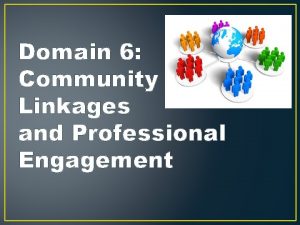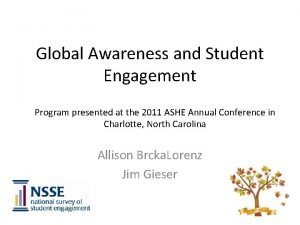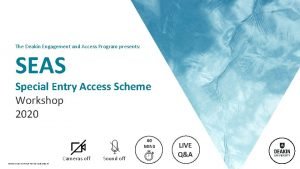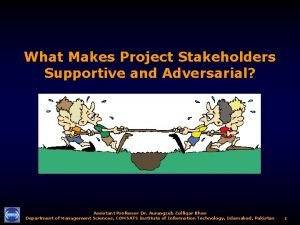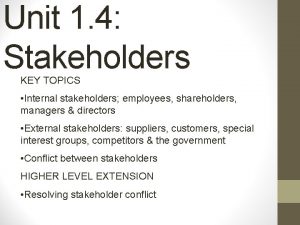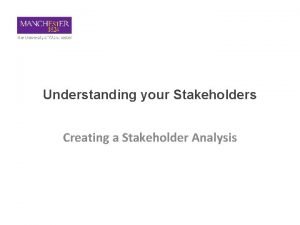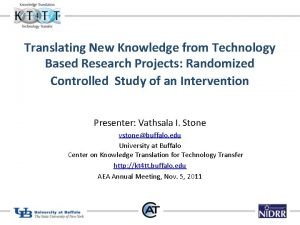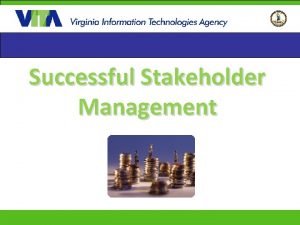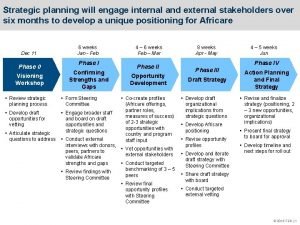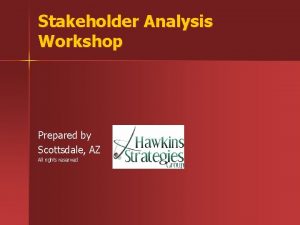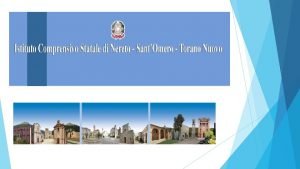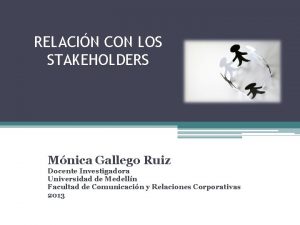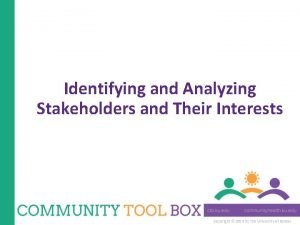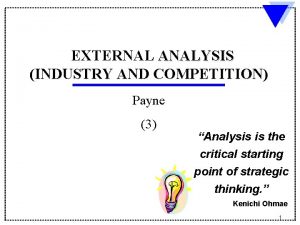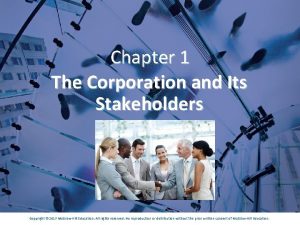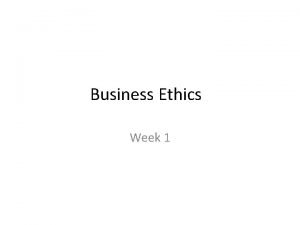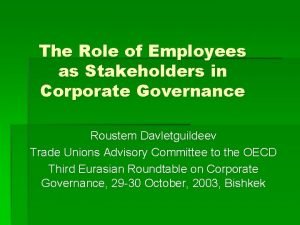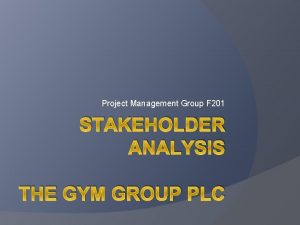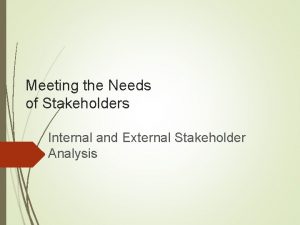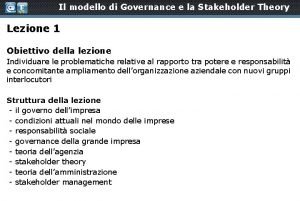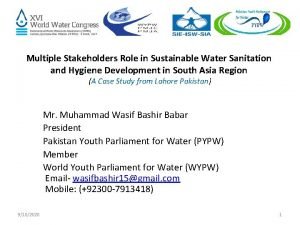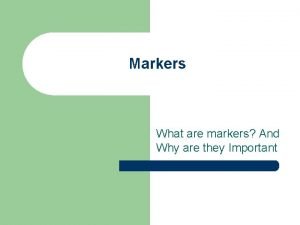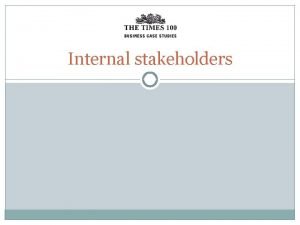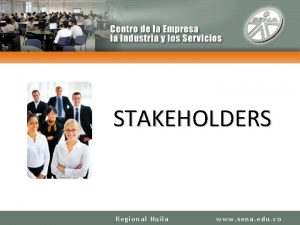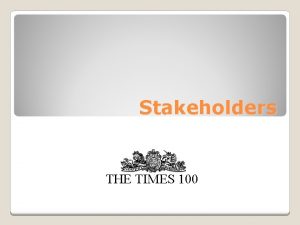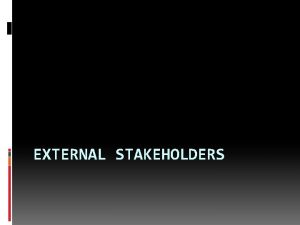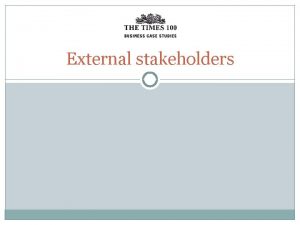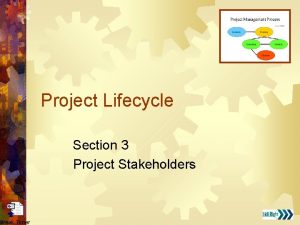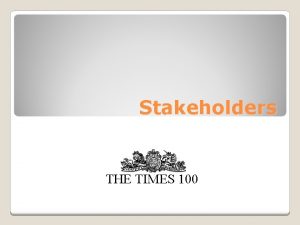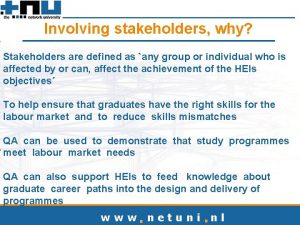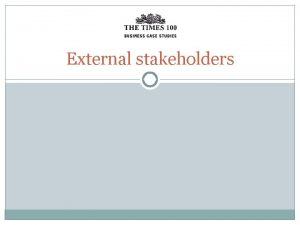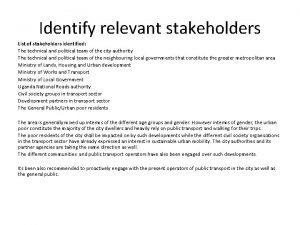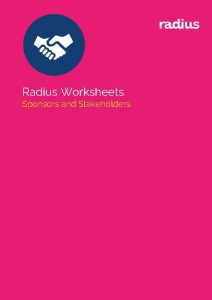The Importance of Stakeholders Engagement in Program Quality









































- Slides: 41

The Importance of Stakeholders’ Engagement in Program Quality Presented at the Short-Cycle Higher Education (SCHE) in Europe and the United States Varna, Bulgaria; June 2009 Presented By: David E. Beaumont 1

Challenges • Gap between existing workforce skills and workplace demands ü National versus state requirements ü Defining the competencies & standards of the workplace ü Alignment of training programs with the workplace ü Insuring quality programs and services are delivered 2

Goals • Develop an understanding regarding the different stakeholder groups involved with the local community colleges in developing programs and services • The frequency of use of different stakeholders in various economic development activities 3

Conceptual Framework • Community College Involvement Framework ü Examines how interacting with stakeholders may influence positive outcomes for programs and services 4

Conceptual Framework continued • “. . . quantity and quality of the physical and psychological energy that [is] invested” in achieving a desired outcome (Astin, 1999, pg. 528) • Usefulness of policies and practices could be measured by the degree of involvement each elicits • Institution’s service area can improve its economic fortunes by encouraging stakeholder involvement • A strong association between positive performance and goal attainment with higher levels of involvement 5

Methods • The study used a data collection strategy ü Pilot-tested survey data collection method to describe the type of stakeholders involved and the frequency of their involvement • Variables examined are expanded upon from the following Self-audit survey developed by Johnson (2000) ü Workforce Investment Act (WIA) requirements ü 6

Sample • 482 public community colleges that have a defined service area ü An accredited institution of higher education characterized by a two-year curriculum that leads to either the associate degree or transfer to a four-year college. (Gleazer, 1968; Baker, 1999) ü A service area is defined as a “formally designated area or region that a community college has been committed to serve the needs” of the local constituents (Vaughan, 2006, p. 6). 7

Sample • Community college Chief Economic Development Officer (CEDO) as designated by the Chief Executive Officers (CEO) at the institution. ü CEO ü CAO (Chief Academic Officer) ü CEDO 8

Colleges in the RUPRI System 9

22 States in the RUPRI System with Defined Service Areas • Alabama Arkansas Colorado Connecticut • Florida Idaho Illinois Michigan • Mississippi Missouri Nebraska Nevada • New Jersey New York N. Carolina R. Island • Texas Virginia Washington W. Virginia • Wisconsin Wyoming 10

Stakeholder Groups • Education Providers • Governmental Bodies • Private Sector • Internal Groups 11

Type of External Stakeholders • Education Providers ü K-12 ü Public. 4 -yr Universities and Colleges ü Vocational Technical Schools ü Private. 4 -yr Universities and Colleges 12

Results: Educational Stakeholders • K-12 13

Results: Educational Stakeholders • Vocational and Technical Schools 14

Results: Educational Stakeholders • Other Community Colleges 15

Results: Educational Stakeholders • Public 4 -year Universities and Colleges 16

Results: Educational Stakeholders • Private 4 -year Colleges and Universities 17

Type of External Stakeholders • Governmental ü Local Government ü Workforce Development Board ü State Economic Development Authority ü Local Economic Development Authority 18

Results: Government Stakeholders • Local Cities and Counties Governments 19

Results: Government Stakeholders • Local Economic Development Authority 20

Results: Government Stakeholders • Local Workforce Development Boards 21

Results: Government Stakeholders • State Economic Development Authority 22

Type of External Stakeholders • Private Sector ü Local Chamber ü Local Civic Organizations ü Local Business ü Philanthropic Organizations 23

Results: Private Sector Stakeholders • Local Chamber of Commerce 24

Results: Private Sector Stakeholders • Local Civic Organizations 25

Results: Private Sector Stakeholders • Local Businesses 26

Results: Private Sector Stakeholders • Foundations or other Philanthropic Organizations 27

Type of Internal Stakeholders • Staff • Faculty • Students 28

Results: Internal Stakeholders • Staff 29

Results: Internal Stakeholders • Faculty 30

Results: Internal Stakeholders • Students 31

Stakeholders’ Areas of Involvement in Support of Quality • Curriculum and Instruction • Program Review • Staff Development 32

Stakeholders’ Areas of Involvement • Curriculum and Instruction ü Uses advisory committees to maintain the linkage between business and community college ü Provides cooperative education opportunities for students in conjunction with business and industry • Program Review ü Uses advisory committees to maintain the linkage between business and community college 33

Results • Uses Advisory Committees to Maintain Linkage Between Business and the Committee College 34

Curriculum and Instruction • Identify and expand the use of new technologies • Compare program content with occupational competencies and tasks • Advise on labor market trends • Recommend instructional materials and assist in obtaining them • Promote and assist in maintaining quality programs • Assist with incorporating soft skills in the curriculum • Endorse new program applications as appropriate 35

Program Review • Assist in program evaluation efforts • Recommend program goals and objectives • Assess student performance standards to ensure they are in line with business and industry standards • Assess, recommend, and/or provide equipment and facilities • Review student follow-up reports • Identify new programs or elimination of obsolete programs • Assist in short and long-term planning for program improvement 36

Stakeholders’ Areas of Involvement • Staff Development ü Provides faculty with the opportunity to upgrade their occupational skills through a back-to-industry program 37

Staff Development • Invite faculty and staff to participate in industry professional development activities • Provide instructors with retraining/back-to- industry and summer opportunities for technical upgrading • Conduct workplace tours 38

Results • Forms Partnerships with Local Business and Government Agencies 39

Results • Uses Partnerships to Actively Recruit Business to Service Area 40

Questions & Answers 41
 Community linkages and professional engagement moocs
Community linkages and professional engagement moocs Engagement program sample
Engagement program sample Ghana engagement program outline
Ghana engagement program outline Ministry of education secondary engagement program
Ministry of education secondary engagement program Example seas impact statement
Example seas impact statement Adversarial stakeholders
Adversarial stakeholders Primary and secondary stakeholders
Primary and secondary stakeholders Difference between internal and external stakeholders
Difference between internal and external stakeholders Understanding your stakeholders
Understanding your stakeholders C level stakeholders
C level stakeholders Real estate stakeholders
Real estate stakeholders Power and influence matrix
Power and influence matrix Internal vs external stakeholders
Internal vs external stakeholders Internal stakeholders
Internal stakeholders Who are stakeholders of a company
Who are stakeholders of a company Scottsdale explantation
Scottsdale explantation Examples of primary and secondary stakeholders
Examples of primary and secondary stakeholders Stakeholders scuola
Stakeholders scuola Stakeholders
Stakeholders Stakeholders scuola
Stakeholders scuola Stakeholders and their interests
Stakeholders and their interests Internal stakeholders examples
Internal stakeholders examples Primary secondary stakeholders
Primary secondary stakeholders Stakeholder approach
Stakeholder approach The corporation and its stakeholders
The corporation and its stakeholders Primary and secondary stakeholders
Primary and secondary stakeholders Abcd principle
Abcd principle Interne stakeholders
Interne stakeholders Possible conflicts between stakeholder groups
Possible conflicts between stakeholder groups Secondary stakeholders
Secondary stakeholders Role of employees as stakeholders
Role of employees as stakeholders Stakeholders in hiv prevention
Stakeholders in hiv prevention Stakeholders de un gimnasio
Stakeholders de un gimnasio Onion model stakeholder analysis
Onion model stakeholder analysis Stakeholders internal and external
Stakeholders internal and external Stakeholder secondari esempi
Stakeholder secondari esempi Stakeholders in water and sanitation
Stakeholders in water and sanitation Stakeholders plural marker
Stakeholders plural marker Invitation to stakeholders meeting
Invitation to stakeholders meeting Ibm stakeholders
Ibm stakeholders At the seventh sprint review the stakeholders
At the seventh sprint review the stakeholders Parenzo hall westfield state university
Parenzo hall westfield state university
